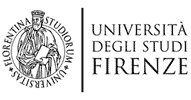Experimental methods for the study of nanostructured materials
Emiliano Fratini
6 ECTS: 32 hours of lectures and 24 hours of laboratory training
Aims: Aim of this course is to train students on modern characterization techniques for nanostructured materials in solution, from biological macromolecules and synthetic polymers, to nanoparticles and self-assemblies. The students will learn the basic theoretical principles underpinning experimental methods in direct and indirect space and will receive hands-on laboratory training on microscopic and scattering methods, including those studied and prepared in other courses.
Concerning the experimental facilities, these will include those already available in the Dept and the new Cryo-EM, whose purchase had been funded by the “Dipartimento di Eccellenza” call.
Lectures
Direct Observation Techniques:
Optical Microscopy: a) Basics: The compound microscope; Image formation and Illumination paths in the compound microscope; Diffraction and interference in the microscope; Resolution; b) Contrast Techniques: Bright and Dark Field Microscopy; Phase Contrast; Fluorescence Microscopy; Confocal Microscopy; Super-resolution microscopy; Applications: Colloids, Polymers, Biological Systems
Electron Microscopy: a) Electron Optics: Electrostatic and magnetic lenses; b) Transmission Electron Microscopy (TEM): Components of a TEM microscopy; Elastic and inelastic electron scattering; Contrast principles in TEM; Specialized techniques; Applications: Colloids, Polymers, Biological Systems
Scanning electron microscope (SEM): Components of a SEM microscope; SEM modes: secondary emission and backscattering; Applications: Colloids, Polymers, Biological Systems
Atomic Force Microscopy (AFM): Components: Tip, Cantilever, Detector, Feedback mechanism; Topography: Contact and Non-contact modes; Force Measurements: Force-indentation curves, Elasticity, Microrheology; Additional operation modes. Applications: Colloids, Polymers, Biological Systems
Indirect Methods: Scattering
Fundamentals; Radiation-Matter interaction and Contrast; Radiations: X-Rays, Light, Neutrons
Static Scattering: Structural Properties. System with a discrete number of scatterers: Dilute Systems: Form Factor; Concentrated Systems: Interactions and Structure Factors; Length Scales and Scattering Vector; Ordered and Disordered Systems, Specialized Setups. Applications: Colloids, Polymers, Biological Systems
Laboratory practice
Microscopy:
1) Structure and dynamics of a colloidal dispersion using Confocal Microscopy
2) TEM and SEM investigation of colloidal and biological samples
3) Surface topography with the Atomic Force Microscope Scattering:
4) Determination of a colloidal form factor and structure factor using Small Angle X-Ray Scattering


